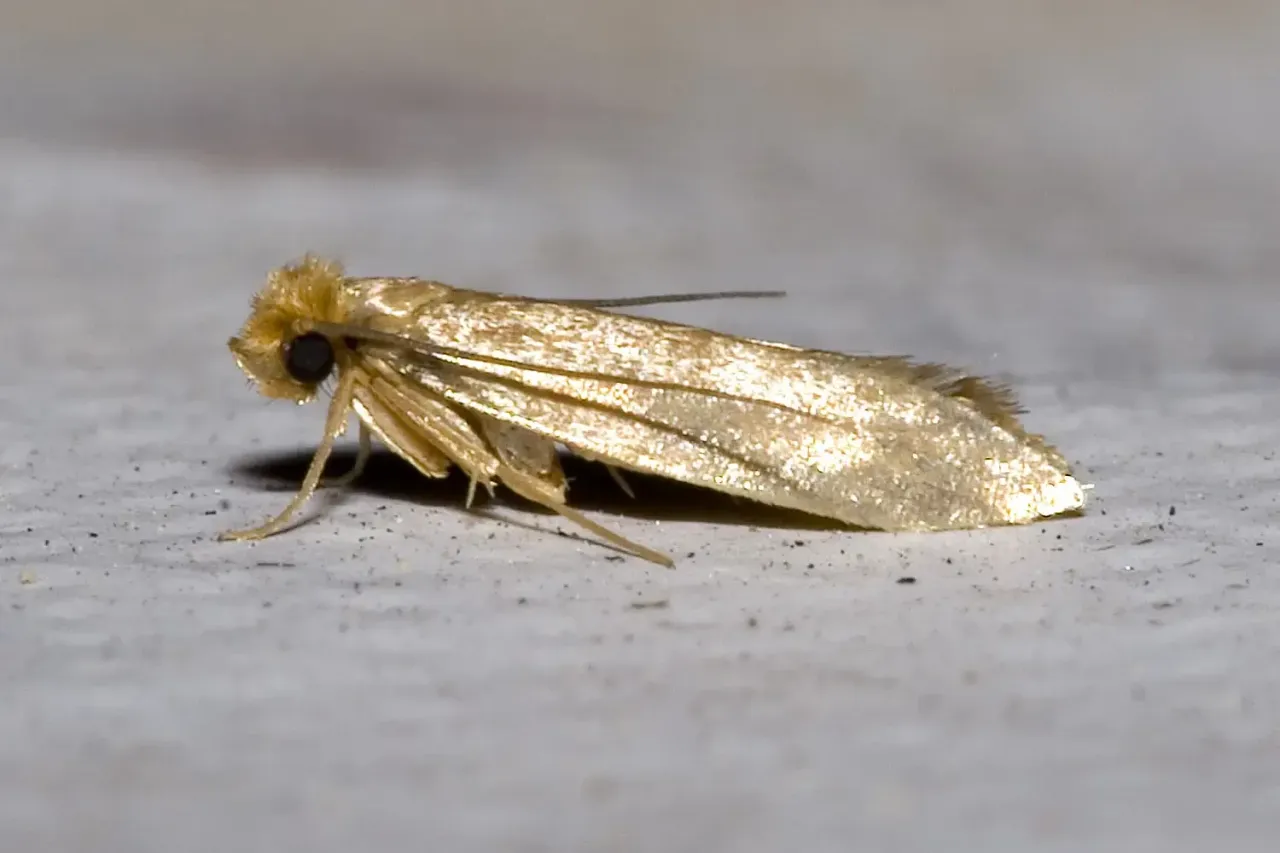While we put on our clothes daily, we start to realize that they begin to get old, suffering from both degradation but just while we thought they were only degrading, there is one caterpillar that does a good job consuming them as well, and it is known as the Common Clothes Moth (Tineola bisselliela).
The larva of the common clothes moth feeds on our clothes not because it is a destroyer of fashion, but rather it is interested in finding keratin which is common in sheep wools found in sweaters and Cashmere in blankets as well as sweaters. But you know, this larva wants more so instead of just going with the cloth alone, it is also interested in our sweat for vitamin B as well as oil and skin flakes from our body that fall on the clothes.
Contrary to what we might think, these moths do not fly into our home, they come in invited by us because we bring them into our home. When they get in, they lay their eggs and larvae on our clothes and cling to them very hard. They get shelter on our clothes as well as feed on our clothes only to poop on the same cloth. They can make their poop become an inner shelter where they can hide themselves until then larvae becomes an adult moth. At this point, the adult moth doesn't have any need for our clothes again since they cannot eat anyway but they lay their eggs on our clothes.
These moths reproduce very fast because the siblings can mate with one another making their numbers grow very fast. So they can consume our entire clothes in a short time. Scientists are looking to find a nemesis for the common clothes worm. In the search for this, the Trichogramma Wasps (parasitoid wasps) were employed. It has been used for years in agriculture.
When the Trichogramma wasp is introduced into your clothes, it lays its egg into the eggs of the common clothes moth. The wasps are females and reproduce asexually not needing a male to help with reproduction. The wasp lays its egg inside the egg of the moth. While the wasp will do a good job, the best way to avoid the common clothes moth is to avoid the infestation in the first place. Using a vacuum cleaner for rugs, and inspecting clothes properly is a good way to prevent their infestation.
You Can Read More
https://www.insectslimited.com/webbing-clothes-moth
https://entomology.ca.uky.edu/ef609
https://www.nytimes.com/wirecutter/blog/how-to-get-rid-of-clothes-moths/
https://www.nhm.ac.uk/take-part/identify-nature/common-insect-pest-species-in-homes/clothes-moths-identification-guide.html

https://dragonfli.co.uk/products/clothes-moth-egg-sachets
https://www.nytimes.com/2024/11/26/magazine/moths-clothes-trichogramma-wasps.html

